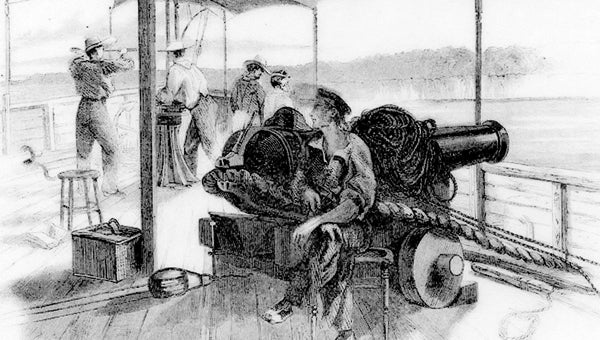Gunboats on the Nansemond
Published 9:23 pm Saturday, April 13, 2013
A river patrol takes fire
To mark its 150th anniversary, through May 4, the Suffolk News-Herald will feature a multi-part series by Suffolk historian Kermit Hobbs detailing the 23-day Siege of Suffolk.
Tuesday, April 14, 1863
Part 5: Gunboats on the Nansemond
By Kermit Hobbs
Special to the News-Herald
Several days earlier, Union Gen. John J. Peck had recalled most of the men who had been working on defensive works in the east side of the Nansemond River. At the same time, Adm. S.P. Lee had sent over a number of gunboats to patrol the river and help prevent a crossing by Gen. James Longstreet’s Confederates.
The gunboats were actually tugboats, ferry boats, and just about any floating craft that could carry a cannon. Most were side-wheel paddleboats.
Gen. George Getty commanded the Union brigade that was assigned to defend the northern front, which included the river.
To say that General Getty disagreed with Peck’s removal of the men from the river defenses would be an understatement. General Getty argued vigorously with Peck that the gunboats alone could not resist a Confederate crossing. There needed to be a strong presence of the army along the east bank, and they needed to complete the defensive works that had been started earlier. Today, General Getty would be proven correct.
This morning, three Union gunboats, the Stepping Stones, the Mount Washington, and the West End, began their patrol up the Nansemond toward Suffolk. Soon after they rounded a bend in the river known as Norfleet’s Point, they were suddenly fired upon by Confederate artillery on the hill overlooking the river.
The first shot hit the boilers of the Mount Washington, and the ship was dead in the water. In the melee, the West End ran aground and was stuck in place. Only the Stepping Stones, a converted ferryboat, was still operational.
Under intense fire from the Rebels, the Stepping Stones, commanded by Lt. Roswell Lamson, managed to pull the other two boats to safety around the bend in the river. The bend in the river is where the present Route 58 bypass crosses.
As severe as this action had been for the gunboats, their day was just getting started. They turned back downstream toward the relative safety of the lower Nansemond, where the river was broader and out of the reach of the Rebel artillery.
As the little flotilla nearly reached the bar at Hill’s Point, alongside today’s Nansemond River Golf Course, the Mount Washington, still being towed, drifted aground almost directly in front of six Rebel cannons at Hill’s Point and four more just downstream.
The heavy gunboat Commodore Barney came into closer range to fire on the Confederates and help support the disabled Mount Washington. The artillery battle between the gunboats and Confederate batteries lasted until 6 p.m., when the rising tide finally enabled the Stepping Stones to pull the Mount Washington to safety.
The gunboats had suffered six men killed and 14 wounded. The Mount Washington had sustained 90 direct hits but had somehow remained afloat.
If nothing else, the day’s actions had proven that gunboats alone could not protect the river from a Confederate crossing. The Yankee earthwork defenses on the opposite side of the river were not complete, but work on them had resumed.
The gateway was now open for Longstreet to cross the river with his army if he chose to do so.
Tuesday: Part 6: Dodging bullets






